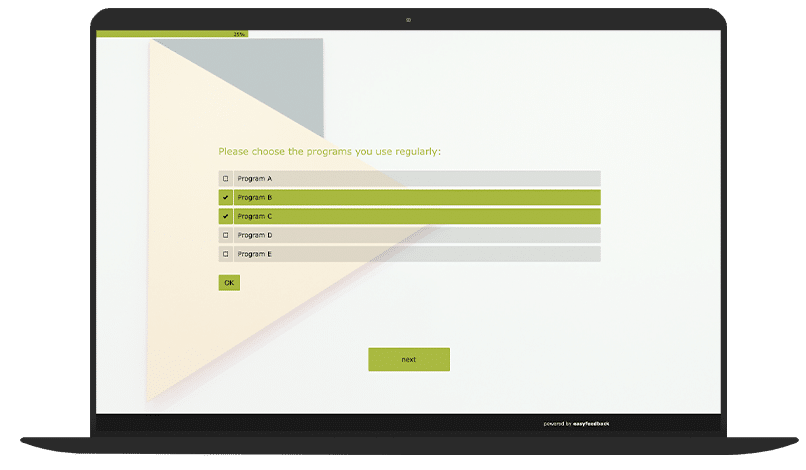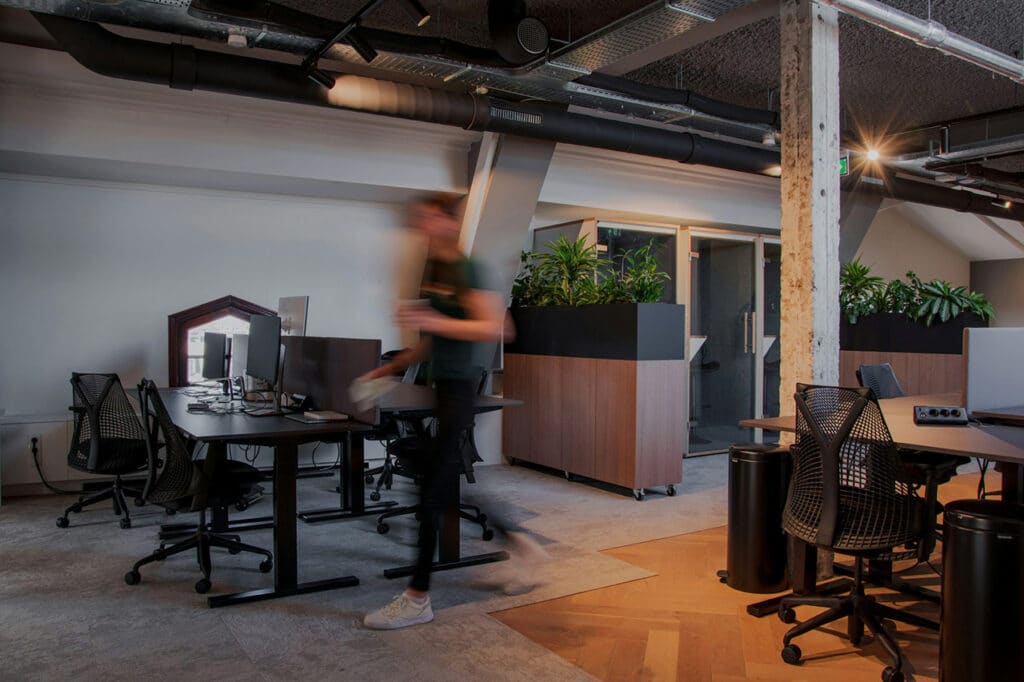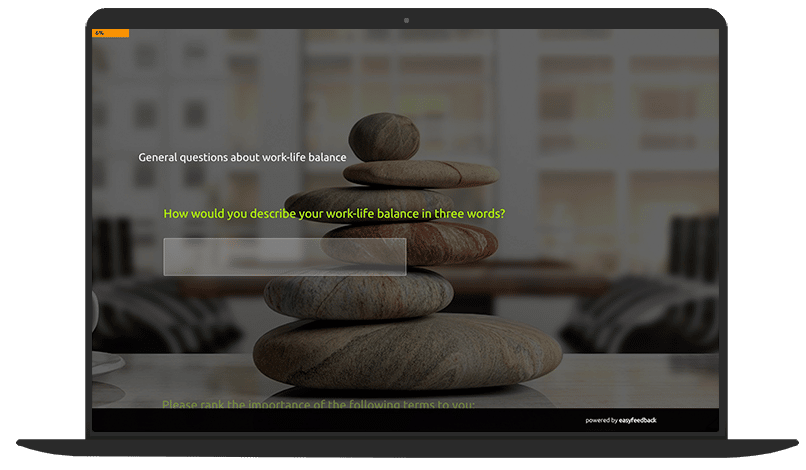Strategy 1: Hiring and onboarding
A smooth recruitment process and an effective onboarding program are the first steps towards a positive employee experience.
A structured hiring process that sets clear expectations and ensures transparent communication allows candidates to build trust in the company from the start.
In addition, a well-designed onboarding program creates a supportive environment where new employees can not only familiarize themselves with the practical aspects of their job, but also learn about the company culture and get to know their colleagues.

By providing relevant resources, training and mentoring opportunities, companies can ensure that new employees quickly settle into their new working environment and feel welcome.
This lays the foundation for long-term employee retention and productivity.
Strategy 2: Clear communication
Open and transparent communication is the backbone of a healthy working environment and contributes significantly to optimizing the employee experience.
When employees and managers communicate regularly and information can flow freely, a climate of trust and collaboration is created.
This means not only that management communicates clear expectations and goals, but also that employees have the opportunity to voice their thoughts, concerns and ideas and be heard.
An open communication culture creates space for constructive feedback that enables employees to develop and improve.

It also enables managers to better understand what their teams need to be successful and provide appropriate support.
Transparency around decision-making processes and company policies promotes a sense of fairness and equality among employees.
When employees understand why certain decisions were made and how they affect their work, they are more likely to feel part of the bigger picture and more committed to the organization’s goals.
By fostering a culture of open communication, organizations can not only increase employee trust and engagement, but also proactively resolve conflict and create a positive work environment where innovation and collaboration can thrive.
Strategy 3: Development and training
Providing development and training opportunities is an essential part of the employee experience and signals to employees that you as a company invest in their professional development and value their skills.
By promoting learning opportunities, employees can continuously expand their skills and knowledge, develop personally and professionally and qualify for future career opportunities.
A diverse range of learning options, including training, workshops, seminars, online courses and mentoring programs, allows employees to customize their individual learning needs and pursue their interests.

In addition, customized development plans can be created that are tailored to the specific goals and skills of each employee to achieve maximum benefit.
Investing in employee development pays off in the long term by increasing employee retention and satisfaction, boosting engagement and improving team performance.
Employees who feel that their employer supports them in their professional development are more motivated to give their best and remain loyal to the company in the long term.

In addition, a culture of continuous learning helps a company keep pace with the ever-changing demands of the market and encourages innovation.
Employees who regularly acquire new skills and knowledge are better able to adapt to change and successfully overcome new challenges, which ultimately supports your company’s growth and competitiveness.
Strategy 4: Workplace design
A pleasant and inspiring working environment is a factor in promoting employee motivation and productivity. It creates an atmosphere in which employees enjoy working and feel motivated to give their best.
An important aspect of such an environment is the physical design of the workplace.
A well-designed workspace with sufficient space, natural lighting and ergonomic furniture promotes the well-being of employees and helps to reduce stress and increase concentration.
In addition, inspiring elements such as colors, artwork and plants can create a positive atmosphere and stimulate employee creativity.

In addition to the physical environment, the corporate culture also plays an important role.
A culture based on trust, respect and collaboration creates a sense of belonging and encourages employees to actively participate in the success of the company.
Companies can cultivate this culture through open communication, employee participation in decision-making processes and the promotion of teamwork.
Promoting a healthy lifestyle in the workplace is also important.
Providing health programs, such as fitness classes, ergonomics training or stress management workshops, supports the physical and mental health of employees and helps to increase their performance and productivity.
Strategy 5: Recognition and reward
Recognizing achievements and successes is part of a positive employee experience and plays a key role in increasing employee engagement and retention.
When employees are recognized for their contributions and successes, they feel valued and motivated to give their best.
Recognition can come in a variety of ways, from public statements of praise and awards to personal messages of thanks from line managers.
It is important that recognition is timely, specific and authentic to maximize its effectiveness.
By seeing that their efforts are appreciated, employees develop a greater commitment to their work and feel more connected to the company.
In addition, appropriate rewards also play an important role in strengthening employee engagement and retention.
Rewards can be financial or non-financial in nature and should aim to appropriately recognize employees’ achievements and successes.

This can take the form of bonuses, salary increases, additional benefits such as flexible working hours or additional vacation, or the provision of development opportunities and career progression.
By combining recognition and reward, companies create a culture of appreciation in which employees feel valued and motivated to give their best.
This not only helps to increase employee satisfaction and retention, but also to promote a positive working atmosphere in which innovation and collaboration can flourish.
Ultimately, this leads to an improved working environment and sustainable success for the company.
Strategy 6: Work-life balance
Flexibility in working hours and the promotion of a healthy work-life balance are other crucial elements of a positive employee experience and signal that the company takes the well-being of its employees seriously.
In a world that is increasingly characterized by flexibility and mobility, companies recognize the importance of giving their employees the opportunity to adapt their working hours to their individual needs.
Providing flexible working time models, such as flexitime, part-time or remote working options, allows employees to better balance their work with their personal commitments and interests.

This can help reduce stress, improve work-life balance and increase employee satisfaction.
In addition, flexibility in working hours can increase productivity by allowing employees to work at the times when they are most effective, while allowing them to take care of family matters or personal interests.
However, promoting a healthy work-life balance goes beyond flexibility in working hours.

Companies can also take steps to prevent overwork, encourage breaks and provide resources to help employees reduce stress and recover.
This can include introducing wellness programs, providing mental health resources or creating a company culture that promotes well-being.
Strategy 7: Feedback and participation
Regular feedback contributes significantly to improving the performance and development of employees.
By providing continuous feedback, managers can help employees recognize their strengths and work on their weaknesses.
This not only promotes individual growth, but also helps to improve the overall performance of the team and the company.
Feedback should be constructive, specific and timely to maximize effectiveness and avoid misunderstandings.

Regular feedback meetings allow employees to track their progress, discuss challenges and set goals together with their line manager in order to continuously work on their professional development.
In addition, involving employees in decision-making processes plays an important role in strengthening their commitment and loyalty to the company.
By involving employees in decisions that affect their work and working environment, they feel heard and valued. This creates a sense of belonging and ownership, which helps to increase employee engagement and motivation.
Companies can encourage employee participation through various mechanisms, such as regular team meetings, brainstorming sessions, surveys or employee advisory boards.
By creating opportunities for employees to express their voice and actively participate in shaping their work environment, companies can foster a culture of openness, innovation and collaboration.
Strategy 8: Diversity and inclusion
Fostering a diverse and inclusive work culture is fundamental to the well-being and performance of employees and the long-term success of an organization.
A diverse workforce brings with it a variety of perspectives, experiences and ideas that can enrich the team’s creativity, innovation and problem-solving abilities.
An inclusive work culture creates an environment in which all employees feel respected, valued and heard, regardless of their ethnicity, gender, sexual orientation, religion, age or other characteristics.

By fostering an atmosphere of openness and tolerance, you can break down barriers and create a sense of belonging and acceptance for all employees.
However, promoting diversity and inclusion goes beyond creating a positive work environment.
Companies can also benefit from a diverse workforce by better understanding different audiences, better targeting their products and services to different markets, and developing innovative solutions that meet the needs of a wider range of customers and stakeholders.
To promote a diverse and inclusive work culture, companies can take various measures, including implementing training and awareness programs and promoting diversity in recruitment and promotion.
They can also create networks and support groups for underrepresented employees and develop policies that prevent discrimination and prejudice in the workplace.
By embedding diversity and inclusion as core values in your corporate culture, you can not only strengthen employee engagement and retention, but also increase competitiveness and have a positive impact on society as a whole.
Strategy 9: Technology and tools
Providing effective technologies and tools that make work easier is another important aspect of optimizing the employee experience.
Modern technologies can automate work processes, facilitate the exchange of information and promote collaboration between employees.
By integrating project management software, communication tools and other digital solutions, companies can ensure that their employees can work more efficiently.
In addition, technologies such as cloud computing and mobile applications give employees more flexible access to work materials and allow them to work from different locations.

This not only supports the work-life balance, but also increases the flexibility and agility of the team.
Providing modern technology shows employees that you as a company are investing in their working environment and taking their needs seriously.
This makes them feel better supported and gives them the tools to do their job more effectively.
This in turn leads to an increase in employee productivity and satisfaction, as they can focus on their tasks instead of struggling with outdated or inefficient systems.
Overall, effective technology and tools help to improve the employee experience by streamlining workflows, facilitating collaboration and providing employees with the tools they need to be successful.
Companies that invest in modern technology can therefore not only improve the performance of their employees, but also increase their attractiveness as an employer and attract and retain talented professionals.
Strategy 10: Continuous improvement
A continuous process of evaluating and adapting the employee experience strategy is critical to ensure that it meets the ever-changing needs and expectations of employees.
This process includes regular feedback mechanisms such as employee surveys, performance reviews and informal conversations to gain an understanding of current employee challenges and concerns.
By analyzing this feedback, you can identify trends and patterns and take targeted action to address issues and make improvements.
This may include adjusting workflows, introducing new programs or revising policies and procedures to better meet the needs of employees.
In addition, it is important that organizations remain flexible and can adapt quickly to changes in order to respond to new challenges or opportunities.
This requires an agile and proactive approach to the employee experience, where organizations continually look for ways to improve the work environment and increase employee engagement.
Conclusion
In this post, you’ve learned 10 strategies for optimizing the employee experience.
A smooth recruitment process and effective onboarding, clear communication, development opportunities, recognition of achievements and continuous adaptation of the employee experience strategy all contribute to creating a positive work environment where employees feel valued and can reach their full potential.
By implementing these strategies in your organization, you can not only increase employee engagement and satisfaction, but also improve the performance and long-term success of the company.
More on the topic of Employee Experience
- Employee Experience (EX): Everything you need to know!
- 5 practical examples for improving the employee experience
- Employee Experience Management: What it is and why it is important
- 5 Methods for measuring the employee experience
- Employee Experience measures: How to create a positive employee experience
- The most frequently asked questions in the field of employee experience





